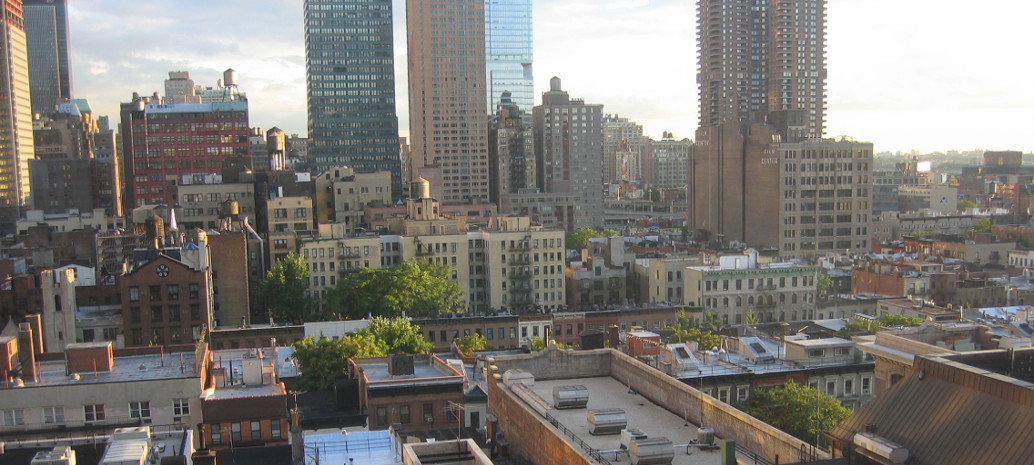Anyone who lived in New York City during Hurricane Sandy remembers well the impacts of that storm on the nation’s largest metropolis, with widespread flooding, more than one million residents without power for the next two nights, and thousands still lacking electricity months later. The traumatic impacts of that storm – as well as the knowledge that with warming seas, more are coming – have been an impetus to drive conversations on how to make the city’s electricity supply more resilient.
As the latest step in that conversation, earlier this week the City University of New York (CUNY) in collaboration with National Renewable Energy Laboratories (NREL) and Meister Consultants released a new report which looks at barriers to deploying “resilient solar”, focusing on distributed PV and battery storage systems, as well as strategies for addressing these roadblocks.
This work is not new for CUNY, which through its Smart DG Hub New York City helped the city to set a goal last year to deploy 100 megawatt-hours (MWh) of energy storage by 2020. Getting there may be another matter, and New York City at the end of 2016 had only deployed 4.8 MWh of energy storage – 4.8% of its goal.
Show me the money
The main challenge identified in New York City Resilient Solar Roadmap is familiar. Despite ongoing cost declines for battery storage systems, they still aren’t cheap. Not only are there currently no state- or city-wide incentives for battery storage, as there are for solar, but the means to compensate or even value the resiliency services that such systems provide are lacking.
This barrier is a familiar one for the solar industry, as both utility-scale solar and distributed solar can provide a range of technical services to improve the function and stability of electrical grids, but in most markets are not currently compensated for doing so. The same goes for distributed batteries in New York. “Resilient solar can provide a number of ancillary services to the grid, but is prevented from being compensated due to the high capacity limits for NYISO’s programs which preclude distributed generators from participating,” notes the report.
But while there is a number for providing grid services in NYISO, the ability of batteries to provide backup power in the event of a storm – including keeping critical city infrastructure operating – has not even been assigned a value by policymakers. “These factors are currently not incorporated into cost calculus for projects or considerations for federal grant funding, but would improve the economic applicability of resilient solar,” reads the report.
It also doesn’t mean that no one is paying for the lack of resiliency. “While this value has not been well-defined as a price signal, the business interruption and property damage costs of outages are typically pushed through to insurance companies, banks, and government agencies,” notes the report.
CUNY’s DG Hub has developed a methodology for valuing resiliency with a goal of developing price signals for services provided by solar and storage. The organization is in the process of refining that methodology and as part of that is working with stakeholders to develop “consensus-based metrics to assess the threat of power outages to building facilities”.
Technical and regulatory barriers
However, these economic and financial barriers are not the only things holding up deployment, and just as was the case with solar, the regulatory process is struggling to keep up with the advance of technology.
“Local permitting processes for dominant (e.g. lithium-ion) and emerging battery chemistries are not formally established or evolving as permitting agencies gain new knowledge, increasing project risk and lag times for resilient solar projects,” reads the report. “This also can decrease the willingness and readiness of the energy storage industry to participate in the New York market.”
This lag is not only on the part of city agencies, and the report also notes that while standards are under development there are currently no standardized or open protocols for communication systems and grid-wide connectivity.
The report lists a wide range of current efforts to address both technical and economic barriers, some of which are part of the Reforming the Energy Vision (REV) process at the state level. In the interim, the Smart DG Hub New York City is disseminating materials through the site www.nysolarmap.com to assist in deployment.
And as these processes churn slowly forward, everyone in New York is hoping that the next big storm does not hit. At least not yet.
This content is protected by copyright and may not be reused. If you want to cooperate with us and would like to reuse some of our content, please contact: editors@pv-magazine.com.









By submitting this form you agree to pv magazine using your data for the purposes of publishing your comment.
Your personal data will only be disclosed or otherwise transmitted to third parties for the purposes of spam filtering or if this is necessary for technical maintenance of the website. Any other transfer to third parties will not take place unless this is justified on the basis of applicable data protection regulations or if pv magazine is legally obliged to do so.
You may revoke this consent at any time with effect for the future, in which case your personal data will be deleted immediately. Otherwise, your data will be deleted if pv magazine has processed your request or the purpose of data storage is fulfilled.
Further information on data privacy can be found in our Data Protection Policy.